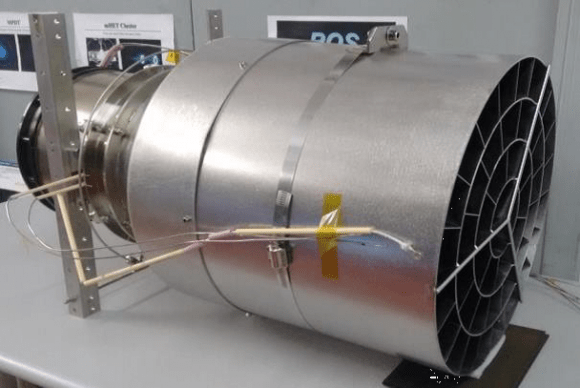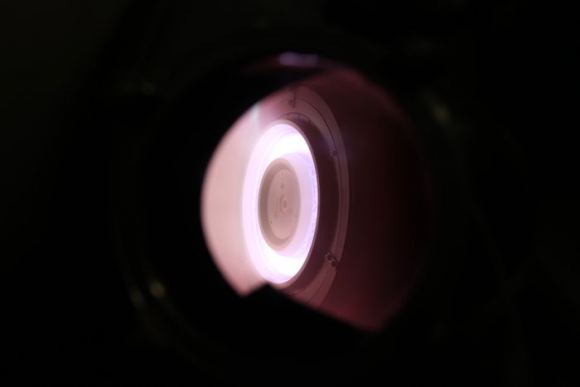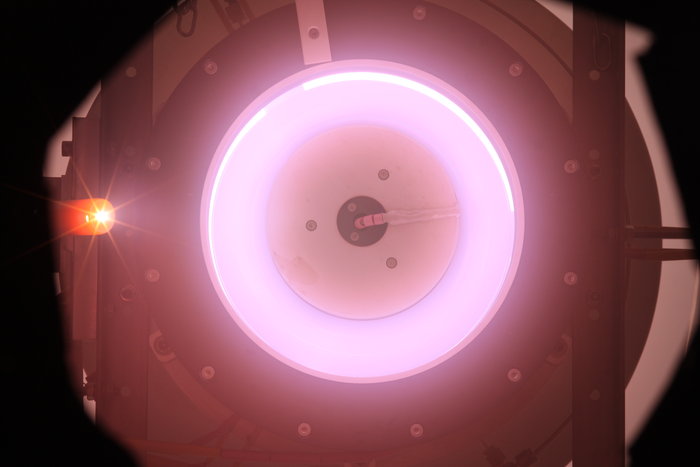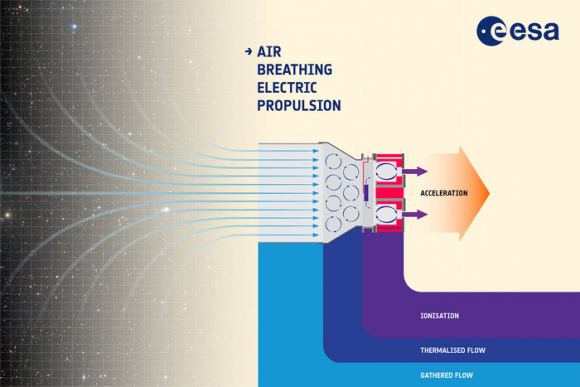When it comes to the future of space exploration, one of the greatest challenges is coming up with engines that can maximize performance while also ensuring fuel efficiency. This will not only reduce the cost of individual missions, it will ensure that robotic spacecraft (and even crewed spacecraft) can operate for extended periods of time in space without having to refuel.
In recent years, this challenge has led to some truly innovative concepts, one of which was recently build and tested for the very first time by an ESA team. This engine concept consists of an electric thruster that is capable of “scooping” scarce air molecules from the tops of atmospheres and using them as propellant. This development will open the way for all kinds of satellites that can operate in very low orbits around planets for years at a time.
The concept of an air-breathing thruster (aka. Ram-Electric Propulsion) is relatively simple. In short, the engine works on the same principles as a ramscoop (where interstellar hydrogen is collected to provide fuel) and an ion engine – where collected particles are charged and ejected. Such an engine would do away with onboard propellant by taking in atmospheric molecules as it passed through the top of a planet’s atmosphere.

The concept was the subject of a study titled “RAM Electric Propulsion for Low Earth Orbit Operation: An ESA Study“, which was presented at the 30th International Electric Propulsion Conference in 2007. The study emphasized how “Low Earth orbit satellites are subject to atmospheric drag and thus their lifetimes are limited with current propulsion technologies by the amount of propellant they can carry to compensate for it.”
The study’s authors also indicated how satellites using high specific impulse electric propulsion would be capable of compensating for drag during low altitude operation for an extended period of time. But as they conclude, such a mission would also be limited to the amount of fuel it could carry. This was certainly the case for the ESA’s Gravity field and steady-state Ocean Circulation Explorer (GOCE) gravity-mapper satellite,
While GOCE remained in orbit of Earth for more than four years and operated at altitudes as low as 250 km (155 mi), its mission ended the moment it exhausted its 40 kg (88 lbs) supply of xenon as propellant. As such, the concept of an electric propulsion system that an utilize atmospheric molecules as propellant has also been investigated. As Dr. Louis Walpot of the ESA explained in an ESA press release:
“This project began with a novel design to scoop up air molecules as propellant from the top of Earth’s atmosphere at around 200 km altitude with a typical speed of 7.8 km/s.”
To develop this concept, the Italian aerospace company Sitael and the Polish aerospace company QuinteScience teamed up to create a novel intake and thruster design. Whereas QuinteScience built an intake that would collect and compress incoming atmospheric particles, Sitael developed a dual-stage thruster that would charge and accelerate these particles to generate thrust.
The team then ran computer simulations to see how particles would behave across a range of intake options. But in the end, they chose to conduct a practice test to see if the combined intake and thruster would work together or not. To do this, the team tested it in a vacuum chamber at one of Sitael’s test facilities. The chamber simulated an environment at 200 km altitude while a “particle flow generator” provided the oncoming high-speed molecules.
To provide a more complete test and make sure the thruster would function in a low-pressure environment, the team began by igniting it with xenon-propellant. As Dr. Walpot explained:
“Instead of simply measuring the resulting density at the collector to check the intake design, we decided to attach an electric thruster. In this way, we proved that we could indeed collect and compress the air molecules to a level where thruster ignition could take place, and measure the actual thrust. At first we checked our thruster could be ignited repeatedly with xenon gathered from the particle beam generator.”

As a next step, the team partially replace xenon with a nitrogen-oxygen air mixture to simulate Earth’s upper atmosphere. As hoped, the engine kept firing, and the only thing that changed was the color of the thrust.
“When the xenon-based blue color of the engine plume changed to purple, we knew we’d succeeded,” said Dr. Walpot. “The system was finally ignited repeatedly solely with atmospheric propellant to prove the concept’s feasibility. This result means air-breathing electric propulsion is no longer simply a theory but a tangible, working concept, ready to be developed, to serve one day as the basis of a new class of missions.”
The development of air-breathing electric thrusters could allow for an entirely new class of satellite that could operate with the fringes of Mars’, Titan’s and other bodies atmospheres for years at a time. With this kind of operational lifespan, these satellites could gather volumes of data on these bodies’ meteorological conditions, seasonal changes, and the history of their climates.
Such satellites would also be very useful when it comes to observing Earth. Since they would be able to operate at lower altitudes than previous missions, and would not be limited by the amount of propellant they could carry, satellites equipped with air-breathing thrusters could operate for extended periods of time. As a result, they could offer more in-depth analyses on Climate Change, and monitor meteorological patterns, geological changes, and natural disasters more closely.
Further Reading: ESA


